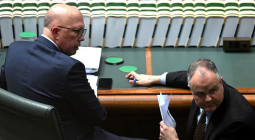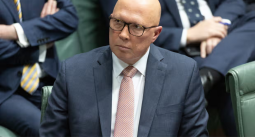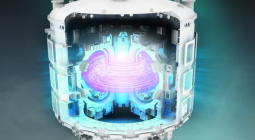Coalition’s nuclear plan will add $665 a year to average power bill, report warns
Opposition disputes costings in study and accuses authors of cherrypicking ‘worst-case scenario projects’ from around the world
The Coalition’s plan for seven nuclear power plants would lift power bills for average households by $665 a year based on estimated costs of six overseas nuclear projects, according to an Institute for Energy Economics and Financial Analysis report.
The Ieefa findings built on the CSIRO’s GenCost studies that have shown nuclear energy to be the most expensive form of new power generation. It assessed recent construction costs at plants in the US, UK, Finland and France, and two proposed plants – one in the Czech Republic and an abandoned small modular reactor in the US.
“The cost of electricity generated from nuclear plants would likely be 1.5 to 3.8 times the current cost of electricity generation in eastern Australia,” the Ieefa report by Johanna Bowyer and Tristan Edis found.
“In the international examples examined, the capital cost of nuclear power plants was very high – up to $90bn,” Bowyer said. “Recent international large-scale nuclear projects have experienced construction challenges, delays and cost blowouts.”
Nuclear’s cost disadvantage compared with solar, wind and other generation types is likely underestimated, Edis said. Ieefa’s modelling assumed a 60-year economic lifetime excluding likely refurbishment costs, a “very high” 93% utilisation rate and no financial premium despite the higher construction risks of nuclear plants.
“Further, Australia has very limited nuclear capability, and all examples used were from countries which already have an established nuclear industry,” Edis said. “So Australia could see even higher bills than what our study shows.
“Nuclear is often mistakenly perceived to be a cost-effective technology because it is in widespread use across the globe,” he said. “Yet most of the plants built in the western world were committed based on projected costs and timeframes that turned out to be horrible underestimates.”
The Ieefa paper’s release coincided with an update of the world nuclear energy industry status report supported by the German and Austrian governments among others. It found nuclear generation capacity shrank 1 gigawatts last year and host nations excluding China closed a net 51 units over the past two decades.
Most energy companies and the Albanese government have rejected the Coalition’s nuclear plans, citing costs and their likely unavailability for many years, since they were announced in June. Peter Dutton is expected to provide more details at a Ceda thinktank event in Sydney on Monday.
The government has set a target of supplied 82% of electricity from renewable energy sources by 2030, or about double the present proportion. The Australian Energy Market Operator, though, has repeatedly warned renewables were not being added fast enough to cope with expected closures of coal-fired plants.
Ted O’Brien, the opposition’s climate and energy spokesperson, said Ieefa’s modelling “does not reflect Coalition policy” and matched previous critiques “where a dodgy piece of analysis cherrypicks the worst-case scenario projects and pretends that it’s common practice”.
“Our zero-emissions nuclear power plants will be government-owned and, unlike Labor’s capacity investment scheme, we will release our costings ahead of the next election,” O’Brien said.
The world nuclear energy industry status update, meanwhile, found total investment in non-hydro renewables capacity reached a record US$623bn (A$913bn) in 2023, or 27 times the reported global investment decisions for nuclear plant construction.
Solar generation capacity rose 73% and windfarm capacity 51%, adding a combined 460GW of new renewables capacity even as nuclear generation shrank 1GW. Wind and solar electricity amounted to 50% more than nuclear, the report found.
All up, 13 nations were hosting 59 nuclear reactor construction projects, or three fewer countries than in mid-2023. At least 23 of those projects faced delays.
China dominated with 27 reactors being built, all at home. Russia accounted for the bulk of the remainder, with 26 units under construction, 20 of which were in seven nations, said the report co-written by the independent analyst and nuclear critic Mycle Schneider.
Cover photo: Nuclear is ‘often mistakenly’ perceived to be cost-effective because it is widespread, but most plants in the west are based on projected costs and timeframes that turn out to be ‘horrible underestimates’, Ieefa says. Photograph: Mike Stewart/AP





